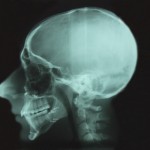
Fracture of the mandible is a common facial injury with interpersonal violence and road traffic accidents being the leading causes of this type of injury. Treatment usually involves immobilisation with intermaxillary fixation (IMF) or other external or internal devices (i.e. plates and screws) to allow bone healing and may involve surgical (open) or non-surgical (closed) approaches. The aim of this review was to provide reliable evidence of the effects of any interventions either open (surgical) or closed (nonsurgical) that can be used in the management of mandibular fractures, excluding the condyles, in adult patients.
A typical Cochrane approach was taken with searches of a number of databases, The Cochrane Oral Health Group’s Trials Register, Cochrane Central Register of Controlled Trials (CENTRAL) Medline, Embase, the metaRegister of Controlled Trials, ClinicalTrials.gov and the WHO International Clinical Trials Registry Platform. The reference lists were checked for further studies and there were no restrictions regarding language or date of publication. Only randomised controlled trials were considered. Studies involving treatment of unilateral or bilateral condylar were excluded, as they were subject of an earlier review by Sharif et al in 2010. Independent selection and data abstraction was carried out and risk of bias assessment undertaken.
- 12 studies (689 patients, 830 fractures) were included, 6 with high risk of bias, 6 with unclear risk.
- A range on interventions were studied; different plate materials and morphology; use of one or two lag screws; micro-plate versus mini-plate; early and delayed mobilization; eyelet wires versus Rapid IMF™ and the management of angle fractures with intraoral access alone or combined with a transbuccal approach.
- Patient-oriented outcomes were largely ignored and post-operative pain scores were inadequately reported.
- Only 1 or 2 trials with small sample sizes were conducted for each comparison and outcome so the results should be treated with caution.
- No significant difference in the risk of postoperative infection of surgical site (risk ratio (RR) 1.32, 95% CI 0.41 to 4.22, P = 0.64, I2 = 0%) was found in pooled data from two studies comparing two mini-plates versus one mini-plate.
- Similarly, no difference in postoperative infection between the use of two 3-dimensional (3D) and standard (2D) mini-plates was determined (RR 1.26, 95% CI 0.19 to 8.13, P = 0.81, I2 = 27%).
- The included studies involved a small number of participants with a low number of events.
The authors concluded
This review illustrates that there is currently inadequate evidence to support the effectiveness of a single approach in the management of mandibular fractures without condylar involvement. The lack of high quality evidence may be explained by clinical diversity, variability in assessment tools used and difficulty in grading outcomes with existing measurement tools. Until high level evidence is available, treatment decisions should continue to be based on the clinician’s prior experience and the individual circumstances.
Comment
This is an update of a Cochrane review published in 2007 at that time no studies were included so it is encouraging that in the intervening years a number of new studies have been conducted that could be included. While this is positive, it remains disappointing that despite clear guidelines for reporting trials ( EQUATOR Network) key information relating to risk of bias is either not part of the protocol or the original trial or not reported.
Links
Nasser M, Pandis N, Fleming PS, Fedorowicz Z, Ellis E, Ali K. Interventions for the management of mandibular fractures. Cochrane Database of Systematic Reviews 2013, Issue 7. Art. No.: CD006087. DOI: 10.1002/14651858.CD006087.pub3.
Sharif MO, Fedorowicz Z, Drews P, Nasser M, Dorri M, Newton T, Oliver R. Interventions for the treatment of fractures of the mandibular condyle. Cochrane Database of Systematic Reviews 2010, Issue 4. Art. No.: CD006538. DOI: 10.1002/14651858.CD006538.pub2.

Hi Mona
Thanks for the clarification about the change of focus between the original and the update.
@TheDentalElf Thanks for quoting our review… a small explanation The question of original review was more focused(less studies. 1/2
@TheDentalElf We expanded the question in the update, one reason we had more studies http://t.co/uNEFAd4enJ